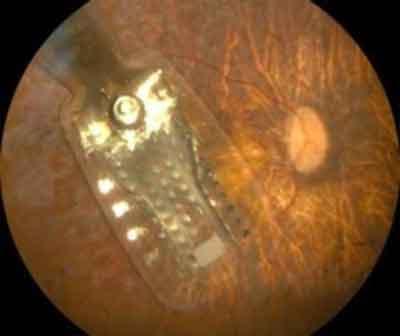- Home
- Editorial
- News
- Practice Guidelines
- Anesthesiology Guidelines
- Cancer Guidelines
- Cardiac Sciences Guidelines
- Critical Care Guidelines
- Dentistry Guidelines
- Dermatology Guidelines
- Diabetes and Endo Guidelines
- Diagnostics Guidelines
- ENT Guidelines
- Featured Practice Guidelines
- Gastroenterology Guidelines
- Geriatrics Guidelines
- Medicine Guidelines
- Nephrology Guidelines
- Neurosciences Guidelines
- Obs and Gynae Guidelines
- Ophthalmology Guidelines
- Orthopaedics Guidelines
- Paediatrics Guidelines
- Psychiatry Guidelines
- Pulmonology Guidelines
- Radiology Guidelines
- Surgery Guidelines
- Urology Guidelines
New treatment improves vision in congenital retinal blindness

In a major breakthrough, researchers have found a new treatment that has shown improvement in vision in patients with a form of congenital retinal blindness.
The researchers from the University of Pennsylvania have designed the treatment for patients with CEP290 mutations and a diagnosis of Leber congenital amaurosis (LCA). CEP290 acts as a gate between two compartments of photoreceptor cells -- a type of sensory neuron in the retina that converts light into signals that provide vision. Primary photoreceptor blindnesses -- such as those caused by CEP290 mutations -- are the most common form of LCA and they are currently not treatable. The study was published in the journal Nature Medicine.
Read Also: New therapy offers hope for patients of rare form of blindness
"It was very dramatic to see one of the patients improve from only being able to differentiate light or dark to reading many letters on an eye chart at two months following the first injection," said lead author Artur V. Cideciyan, Ph.D., a research professor of Ophthalmology. "So, we performed a thorough interim analysis of all results from all patients."
The clinical study involved participants from USA and Europe who received an intraocular injection of an oligonucleotide -- a short RNA molecule -- created to reduce the mutant CEP290 protein levels in the photoreceptors and restore retinal function.
Ten patients received at least one injection into their worst-seeing eye. The most basic functions of photoreceptors are to receive and then signal light. This aspect of vision was tested in patients by presenting flashes of light in the dark and measuring the dimmest flash intensity detected. Treated eyes could detect on average more than six-fold dimmer lights three months after the injections compared to before.
Read Also: Stem cell therapy for treatment of blindness
The results were highly statistically significant. Evaluations with two colors of flashes suggested that it was the cone photoreceptors used for a daytime vision that was improving with the treatment. At three months after the first injection, half of the patients showed improvements in visual acuity, measured by the ability to either read letters or distinguish the direction of black and white bars.
"This therapy to repair the genetic defect in LCA10 is a breakthrough in treatment strategy and will open the door for clinical trials in other patients with this condition and other similar conditions that are currently untreatable," said Samuel G. Jacobson, MD, Ph.D., a professor of ophthalmology and co-lead author of the study.

Disclaimer: This site is primarily intended for healthcare professionals. Any content/information on this website does not replace the advice of medical and/or health professionals and should not be construed as medical/diagnostic advice/endorsement or prescription. Use of this site is subject to our terms of use, privacy policy, advertisement policy. © 2020 Minerva Medical Treatment Pvt Ltd